Simple White Bread is simple to make, and it’s easy enough that you can triple or quadruple the recipe so you can have freshly baked bread every day! Really, you can! It is soft and delicious enough to be enjoyed on its own or with just a touch of butter. If you love homemade bread, be sure to try my Old Fashioned Buttermilk Sweet Bread!
Simple White Bread
My mother-in-law started baking bread with the kids as soon as they were old enough to stand by her side. They loved it… getting their hands into the dough and being a part of creating something so delicious. As a family of seven, we go through 1-2 loaves a day, and I want desperately to be that mom that creates bread from scratch, with love, and with wholesome ingredients. For years now I have been saying how I want to bake fresh bread daily.

But, we all know that can be a bit daunting…However, with the way things are right now in the world and bread disappearing off the shelves, there is no better time to make your own bread. And, I am telling you, this is THE bread to make because it is so easy and you only need a few ingredients!
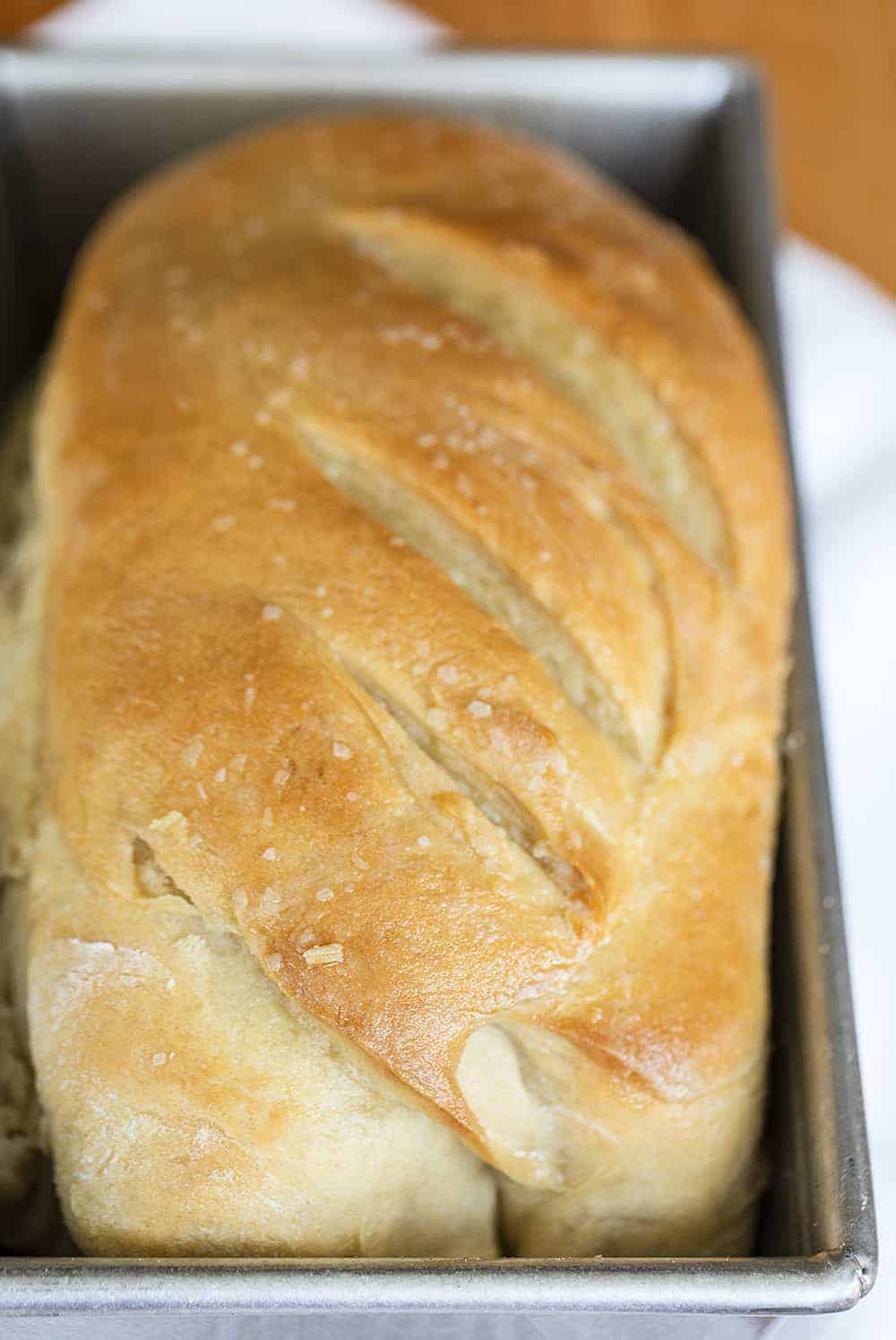
Simple White Bread Recipe
There is a reason I am sharing this recipe now, and that is most importantly convenience. This recipe tastes amazing, you can make as much or as little as you need, and it only used a minimal amount of flour. Most recipes call for 5-6 cups and I wanted to be mindful that rationing ingredients may be on some folks’ minds. With all those wonderful perks for convenience, I would be remiss if I didn’t mention that this bread TASTES AMAZING. You are going to have a hard time stopping at one piece!
With only a few ingredients, and the option to double, triple, or even quadruple the recipe, there is no excuse to not have fresh bread daily. 🙂
How to Make Simple White Bread
After you make a loaf of this Simple White Bread, you will make sure you have enough ingredients to at least double the recipe next time. And, it’s easy enough that your kids could help with the measuring and kneading of the dough. The only hard part about this recipe is the waiting to bake the loaf of bread. You do need to let the dough rest in the refrigerator overnight before baking it.
To prepare the dough, begin by adding the sugar and yeast to a cup of warm water and set it aside. Next, in a medium bowl (or a large bowl if doubling or tripling the recipe), mix together the flour and salt. Add the yeast mixture to the flour mixture and stir everything together.
Get a work surface ready by sprinkling a couple of tablespoons of flour on it. Knead the dough until it is smooth and elastic. Then, place the kneaded dough into a large plastic zip bag that has been drizzled with olive oil. Make sure you get all the dough covered in the oil. Seal the plastic bag and store it in the refrigerator overnight.
How to Bake Simple White Bread
- The next day, when you are ready to bake the bread after letting the dough rest in the refrigerator, remove the dough from the refrigerator. Keep the dough in the plastic zipped bag as you let it come to room temperature.
- After about an hour, sprinkle some more flour (1-2 tablespoons) of flour onto your work surface. Take the dough out of the plastic bag and knead and fold the dough for about a minute.
- Form the dough into a log that will fit into a greased 8-inch loaf pan.
- Cover the dough after you have placed it in the loaf pan, and let it rise until it is almost double in size (about 2 hours). I just used the plastic zip bag to cover the dough, and it worked great!
- After the dough has risen, slash the dough with a sharp knife and bake it for 35-40 minutes at 350°F. To be precise, the internal temperature of the bread should be 190-210°F.
- Let it cool before slicing. Enjoy!
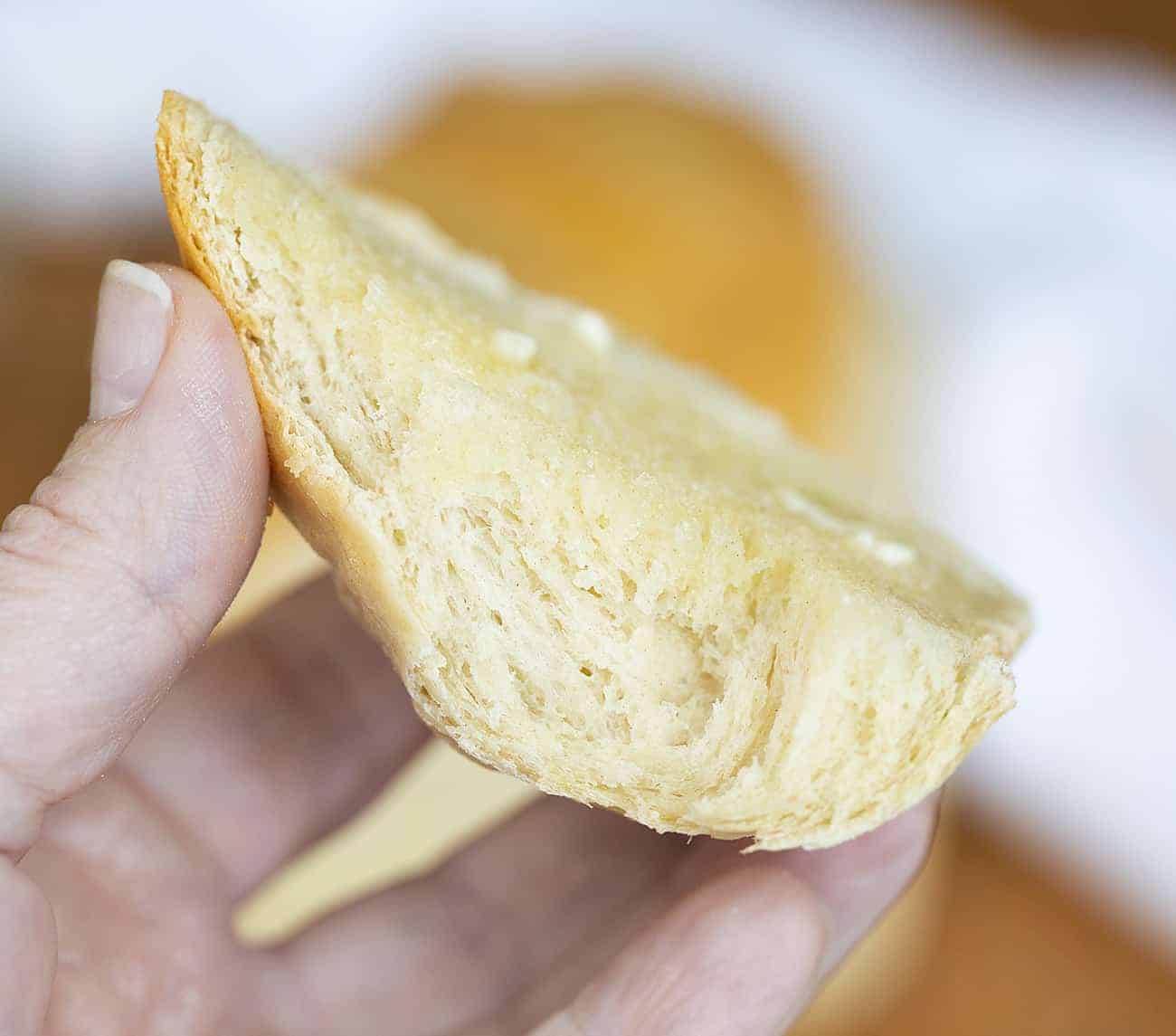
Soft, light, and oh so delicious! I love my bread smothered with warm butter and then sprinkled with flakey sea salt. Perfection!
Can You Bake This Right Away?
Yes! Just skip steps 5 -6 in the recipe below.
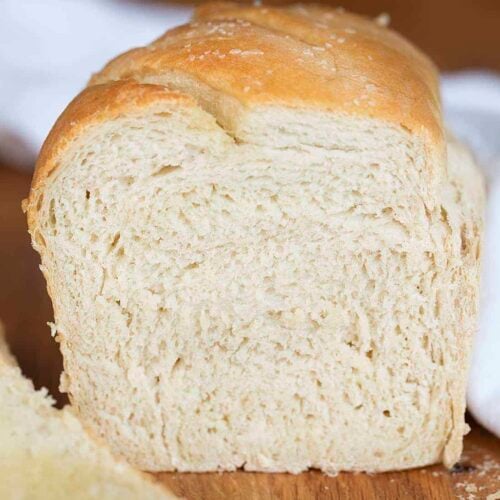
Simple White Bread
Ingredients
- 1 cup water, lukewarm
- 1 tablespoon granulated sugar
- 2½ teaspoons (1 package) dry active yeast (not rapid rise-see notes for Rapid Rise instructions)
- 2½ cups (312g) all-purpose flour
- 1 teaspoon salt
- 2 tablespoons olive oil
Instructions
- In a measuring cup, combine the sugar and yeast to 1 cup of lukewarm water, stirring until combined. Set aside.
- In a medium bowl, mix together the flour and salt.
- Pour the yeast mixture into the bowl and combine all the ingredients.
- Sprinkle 1-2 tablespoons of flour onto your work surface and knead the dough for a few minutes, or until smooth and elastic.
- Store the dough in a sealable plastic bag that has been drizzled in olive oil, making sure the dough is completely covered in the oil. Keep the dough in the refrigerator overnight.
- WHEN YOU ARE READY* to bake the bread, remove the dough from the refrigerator. Leave the dough in the plastic zipped bag,and let it come to room temperature (about an hour). *This can sit in your fridge for SEVERAL days!!
- Prepare a loaf pan with nonstick spray.
- Sprinkle 1-2 tablespoons of flour on your work surface, take the dough out of the bag, and knead and fold the dough for about 1 minute.
- Form a log with the dough that will fit in your prepared loaf pan. Cover the pan with the plastic bag and let it rise until is has at least doubled in size (about 2 hours).
- Meanwhile, preheat the oven to 350°F.
- After the dough has risen, remove the plastic covering and slash the top of the dough with a sharp knife.
- Bake for 35-40 minutes at 350°F, or until the internal temperature is 190-210°F. Let it cool completely before slicing.
Notes
Did you make this recipe?
Thank you for making my recipe! You took pictures, right? Well go ahead and post them on Instagram! Be sure to mention me @iambaker and use the hashtag #YouAreBaker.
Here is a video on how easy this bread is to make:
Looking for More Homemade Bread Recipes?
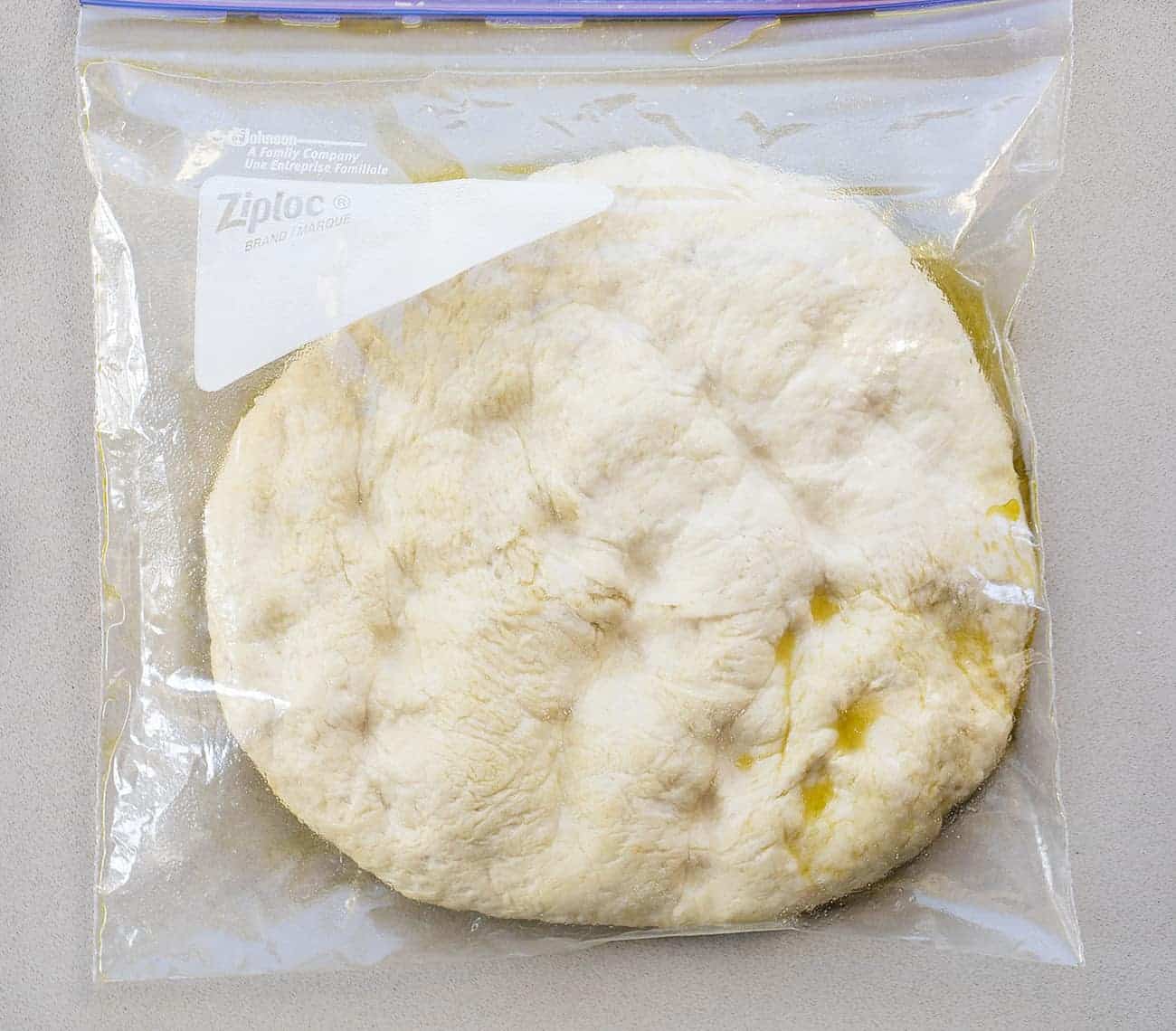
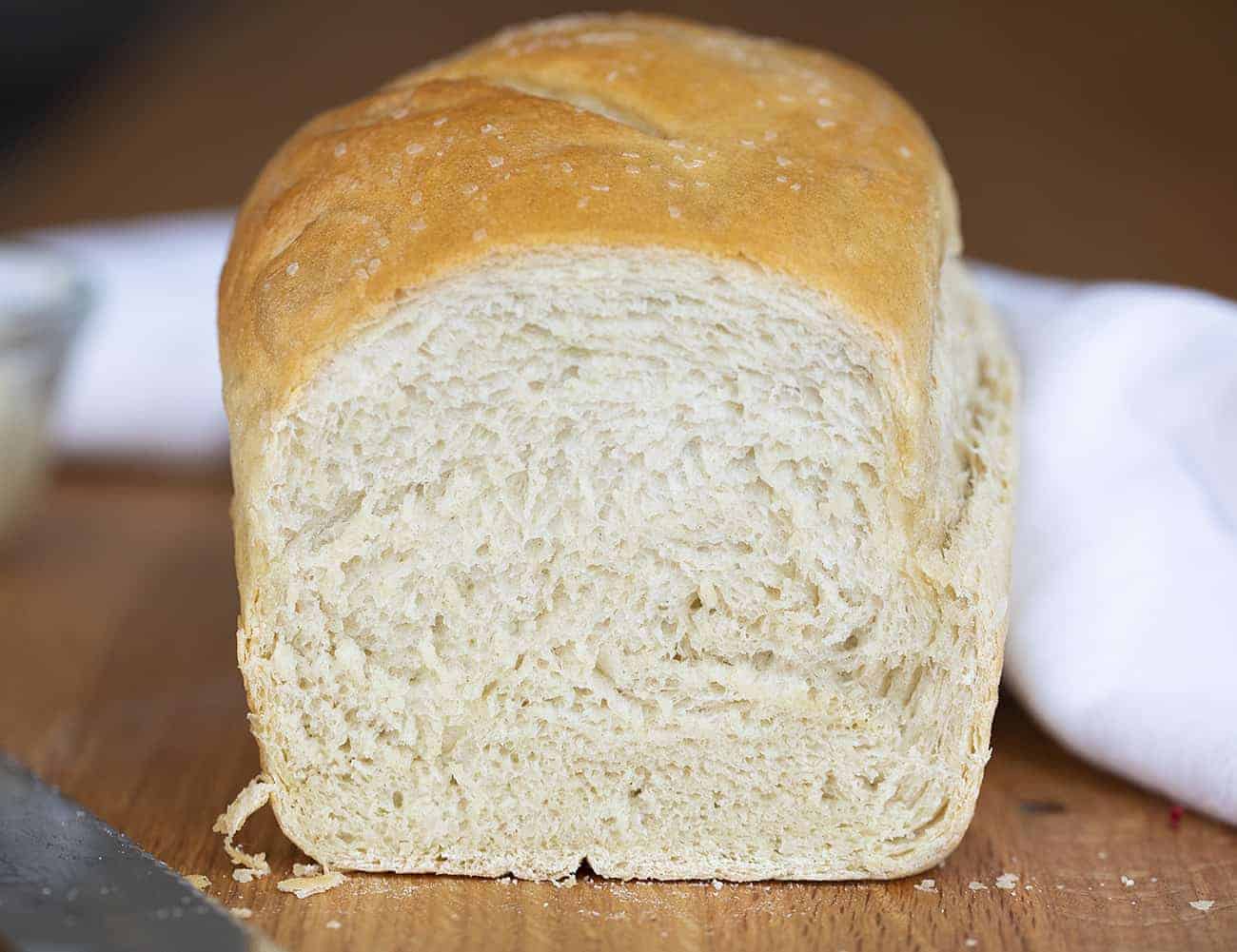
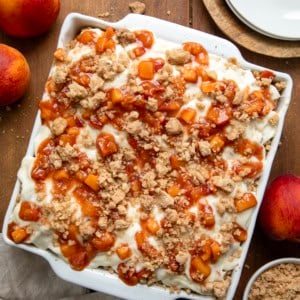


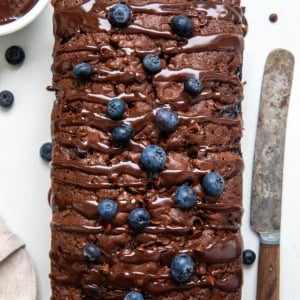







I have made this recipe twice and it never seems to rise very much for me and I know my yeast is good because I proof it first. Just wondering why it might not be rising much. I follow the directions step by step.
I am having the same issues!! Is the issue the oven???
Summer humidity can affect yeast bread baking. Humidity refers to the amount of moisture present in the air. When the humidity is high, there is more moisture in the air, which can impact the process of making yeast bread in several ways:
Dough hydration: The moisture content in the air can affect the hydration level of the dough. If the air is humid, the dough may absorb more moisture from the environment, leading to a stickier and more hydrated dough. This can make it more challenging to handle and shape the dough properly.
Proofing time: Yeast fermentation, which is an essential step in bread baking, is influenced by temperature and humidity. In humid conditions, the yeast may ferment faster due to increased moisture availability. As a result, the dough may rise more quickly than expected. It is crucial to monitor the dough closely during proofing to prevent over-proofing.
Bread texture: High humidity can contribute to a denser and chewier texture in the finished bread. The excess moisture in the air can cause the dough to retain more water, leading to a heavier crumb and reduced oven spring (the final rise during baking). It may be necessary to adjust the recipe slightly by using slightly less water to compensate for the added humidity.
Crust development: Humidity affects crust formation during baking. In humid conditions, the moisture in the air can prevent the bread from forming a crisp and golden crust. Instead, the crust may turn out softer and paler. To counteract this, some bakers recommend increasing the oven temperature or opening the oven door slightly during the later stages of baking to allow moisture to escape.
To adapt to high humidity conditions when baking yeast bread, it can be helpful to make the following adjustments:
Adjust the dough hydration: If the dough feels overly sticky or wet, consider reducing the amount of liquid in the recipe slightly until the dough is easier to handle.
Monitor proofing time: Keep a close eye on the dough during proofing and adjust the time accordingly. If the dough is rising rapidly due to high humidity, shorten the proofing time to prevent over-fermentation.
Adjust recipe or baking conditions: To promote crust development, you can increase the oven temperature slightly or use techniques such as steam injection in the oven to counteract the effects of humidity on the crust.
Remember that baking can be influenced by various factors, including temperature, humidity, and altitude. It may require some experimentation and adjustments to find the right balance for your specific environment.
I am soooo looking forward to trying this recipe, we in our house hold go through alot of bread I am wondering if the dough can be frozen and also if the bread after being baked can also be frozen please. Also thank you for sharing all these amazing recipes 💕
I made this in my breadmaker and used the dough settings. Didn’t proof the yeast, simply added water and oil in the bread pan first, then four salt and sugar (added 2 tablespoons of sugar) and made a well in the centre of the dry ingredients for the yeast.
I took the dough out and baked it in the regular over in a loaf pan. Easiest and most delicious bread ever!
Such a simple delicious bread! Turned out perfect.
Thank you!
Making my first loaf today! I was wondering – Can this recipe be used as pizza dough as well? Thank you!
This may be a silly question, but do you put warm butter and flaky sea salt on top of the bread before you bake it or after?
After. 🙂
Can I bake this after one night in the refrigerator?
I love this recipe. It is very easy and it is very convenient to be able to make it ahead of time and bake it on, “The Day Of”.
Tried it, loved it. Soft and fluffy, with a crispy crust. I added sesame seeds to the top of my tiny loaf. Next time, I’m doubling the recipe. The extra loaf will be for giving. Thank you.
I only have a 9×5 bread pan. Will this work, or will my bread be too flat? Thanks!
Just wanted to say that I made this bread for my county fair and I won first place! So, thank you. 🙂 Making it again now, because I never got a chance to try it last time.
Can I use bread flour instead of all purpose
Sure